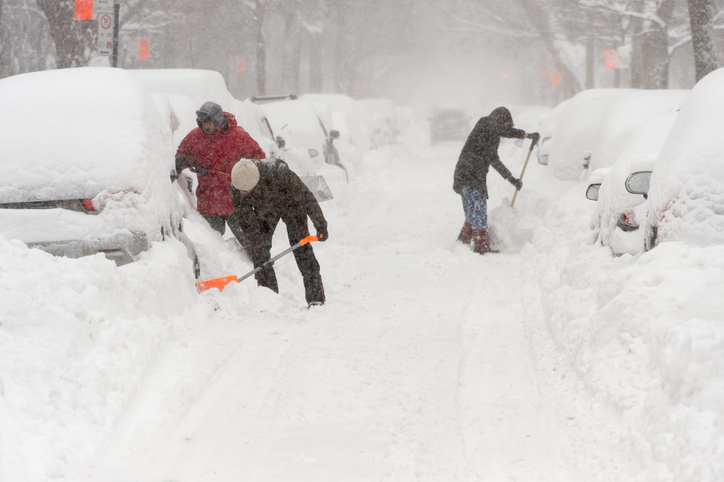
- Jan 01, 2015 |
- Snow Shoveling
Snow Shoveling Hazards

Reposted from 2015
If you live in Canada, you’re used to the chore of shoveling snow in the winter months. This year, we have been blessed with a warm fall and most of us have only recently had to begin digging ourselves out. Whether you’re shoveling at work or at home, there are some things you should consider.
Timing and Attitude
Often the need for shoveling snow arises unexpectedly and interferes with what we had originally planned to do. Consequently we face this unwanted chore unprepared and, more important, in a hurry to get it over with as fast as possible. If we are not careful, we could experience cold exposure, fatigue, ligament sprains, muscle strains and even more serious injury, particularly to the lower back.
Before You Start Shoveling
You should keep in mind that, while shoveling snow may be an excellent workout for the physically fit, it involves strenuous effort. Load a shovel (~ 2 lbs) with 10 lbs of snow (about the average) every 5 seconds, and you end up moving a load of over 250 lbs of snow in one minute. Repeat this for 15 minutes and you will have shoveled over 2000 lbs of snow. Such effort is obviously not for everyone.
It can be hard on the HEART and BACK for those who are not used to it or not in good physical shape. In fact, at least 6 deaths in the recent snow storm in Buffalo were related to heart attacks from snow shoveling. If you are older, overweight, or have a history of back or heart problems, or simply feel that it is too much for you, avoid this job by delegating it to someone else. Another option would be getting a snow blower.
Next, check your clothing. Are you dressed appropriately? Wear several layers of warm lightweight clothing that is hinder free and comfortable to move in. Make sure your head, (especially your ears), feet and hands are well covered. Boots should be water-resistant and high-cut, and should provide good traction. Gloves should be light and flexible and give you a good grip. If it is really cold, wear something over your mouth.
Flexibility and stretching exercises will loosen up the muscles and help to prepare them for the job ahead.
Shoveling Do’s and Don’ts
You may want to get the job over with as fast as you can, but it is better to keep mobile and work at a steady pace. Follow these tips:
DO:
- Warm up with light exercise / stretching first
- Wear slip-resistant shoes
- Wear proper clothing (see above)
- Pace yourself and take frequent breaks – Shovelling snow is strenuous activity comparable to weightlifting while walking on uneven and unstable ground and wearing heavy-duty clothing. Be sure to take frequent breaks and drink some warm non-alcoholic fluids to ensure that you stay hydrated.
- Shovel early and often. Fresh dry snow is lighter and more manageable than wet, heavily packed or partly melted snow.
DON’T:
- Lift the snow – Push it instead. If you must throw it, take only as much snow as you can easily lift and turn your feet to the direction you’re throwing – DO NOT twist at the waist. Throwing the snow over your shoulder or to the side is dangerous! And remember, the wetter the snow, the heavier it is.
Do: You might want to consider using a snow scoop which allows you to move snow with less effort, by pushing instead of lifting. The scoop rides up over the snow to allow you to move the snow without ever having to lift it.
**Stay tuned for our next blog, where we will tackle the trend about bent-handled shovels versus straight-handled ones.
References:
http://www.webmd.com/news/20110120/snow-shoveling-injures-thousands-each-year




